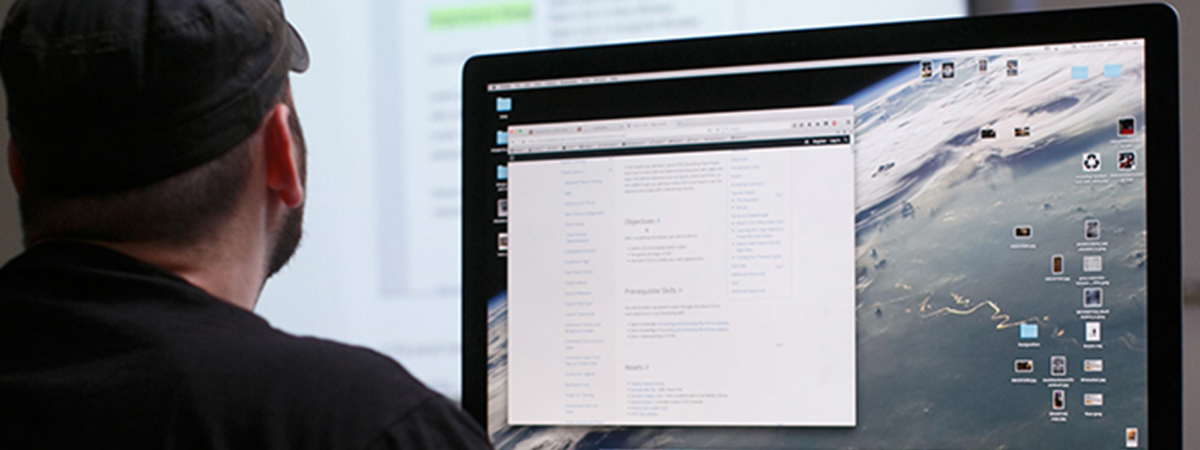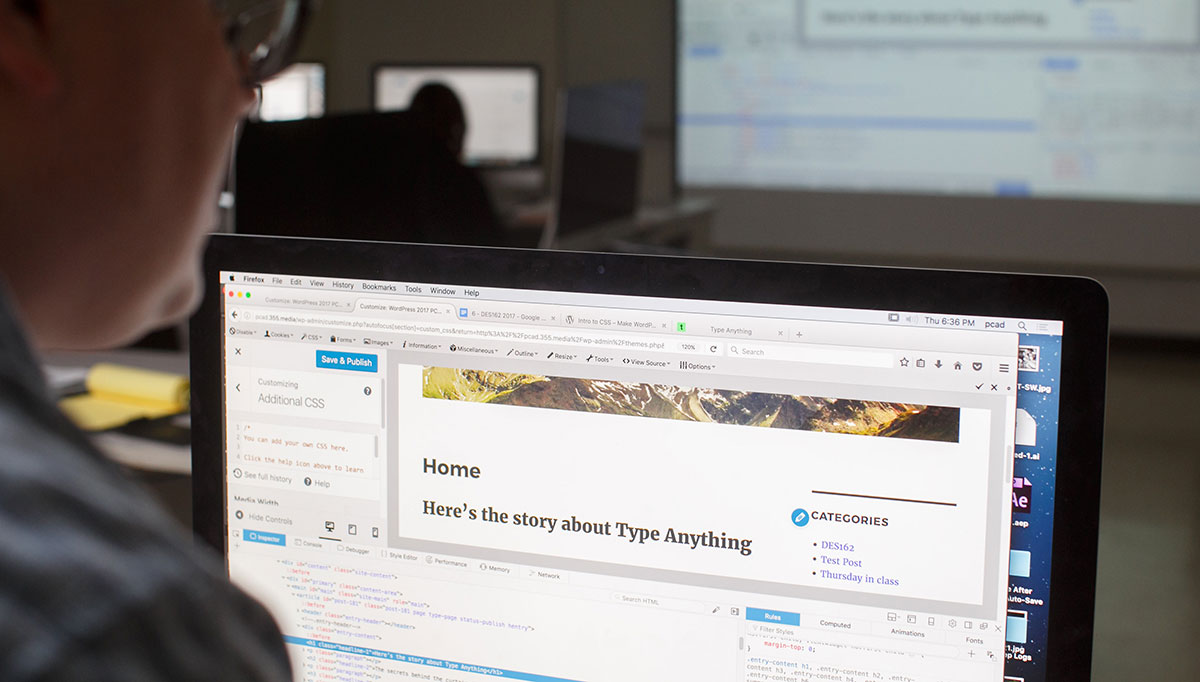Certificate Program
UX/UI Design
Websites and apps are an essential part of life, so good design is a must and UX/UI designers make these technologies satisfying to use
UX is the industry abbreviation for user experience and refers to how a site works - its ease of use, utility and overall satisfaction. UI represents the visual features and layout with which a user would interact. Sometimes referred to as front-end designers, these individuals are responsible for striking a balance between the aesthetics and functionality of websites. The certificate will teach the fundamentals of user experience design that are necessary for meeting user expectations and driving engagement.

Everywhere you look, technology interfaces are becoming more pervasive. AI and the internet of things are producing more devices that connect to an app or website, from watches and health trackers to home appliances and cars. All of these need to be designed and continually updated to keep pace with changing technologies and user expectations.
According to staffing agency Aquent, “designers have become the most ‘in-demand’ [of creative professionals] as user experience becomes vital to industry survival.” Design is behind the websites and mobile applications we use, the entertainment we consume, the cars we drive, our healthcare, and even our grocery shopping experience!
Course Sequence
16.5 Credits | Available Online
GI 205 Typography I
In this class, students will initially work manually with letterforms to gain a craft-based aesthetic knowledge of type and eventually move toward a digital application of type and typographic design. Projects will stress the importance of appropriate type usage while addressing issues of craft, readability, message, and style. The software of the Adobe Creative Suite will also be explored.
Credits : 1.5
GD 206 Typography II
Typography II deals with type as a “volume” and in multi-page productions such as newsletters, magazines, and annual reports. Projects will stress the importance of grids, style sheets, master pages, etc. while exploring the nuances of the software Adobe InDesign.
Credits : 3
GD 217 UX/UI Design</h4
Introduces students to strategy, content development, and design thinking for the Web. Students will learn current prototyping methods and programs for site development.
Credits : 1.5
GI 217 Digital Technology I
The goal of this course is to teach students how to use the computer as a production tool. The software of the Adobe Creative Suite, including but not limited to InDesign, Illustrator, and Photoshop will be taught in order to address current industry standards and requirements. Utility programs, prepress and web issues, and file preparation and management skills will also be taught.
Credits : 1.5
GI 218 Digital Technology II
While good design, illustration, and creativity will be expected, the goal of this course is to teach students how to use the computer as a production tool. The software of the Adobe Creative Suite, including but not limited to InDesign, Illustrator, Photoshop, and Adobe Acrobat will be taught to address current industry standards and requirements. Utility programs, prepress and web issues, and file preparation and management skills will also be addressed.
Credits: 1.5
GD 221 Introduction to Web Design
An introduction to HTML, CSS coding and fundamental concepts of Web Design including image optimization, page layout, and the site creation process.
Credits : 1.5
GD 314 Web Design
Students will utilize UX/UI and prototyping skills to develop website(s) using current web authoring programs and tools.
Credits : 3
GD 319 Advanced Web Design
Building upon UX/UI and web design fundamental techniques, students will learn to develop more sophisticated websites. Responsive design concepts will also be covered as students design their personal portfolio website.
Credits : 3
Course Goals
Students who successfully complete the certificate will be able to:
- Demonstrate a basic understanding of design methods and principles of interaction design.
- The logical process of developing an interactive design based on user personas and scenarios.
- A fundamental understanding of user experience and usability for interaction design concepts.
- Properly employ design thinking processes and UX/UI tools.
- The ability to accept, interpret and apply technical and creative direction.
- The importance of project management, including meeting deadlines and objectives.
- Effectively communicate and persuasively present ideas to an interdisciplinary audience.
- The importance of project management, including meeting deadlines and objectives.
- Verbal and visual communication utilizing a specialized language of technical proficiency, art, and design when discussing one’s own work as well as the work of others.

Career Opportunities
Certificate-holders will possess the experience needed by media and marketing companies, in-house media departments, and the vast array of technology companies that produce digital tools.
Who Should Enroll
The program is designed for a wide range of individuals. College experience is not a prerequisite for this program, but candidates should have an interest in both design principles as well as technical programming skills. High school and college graduates, veterans, professionals, and entrepreneurs will be among the students who bring their diverse perspectives to the program.
Cost
$1,157 per credit hour
A total of 16.5 credit hours are required. Credits will be billed per course.
How to Register
Enrolling in one of PCA&D’s Certificate Programs is simple. Confirm your intent to pursue one of our certificates by filling out an application.
If you have any questions regarding mapping out a plan, upcoming class schedules, or completing your certificate, please contact an Admissions Counselor at 717.396.7833 ext 1001 or email admission@pcad.edu.
